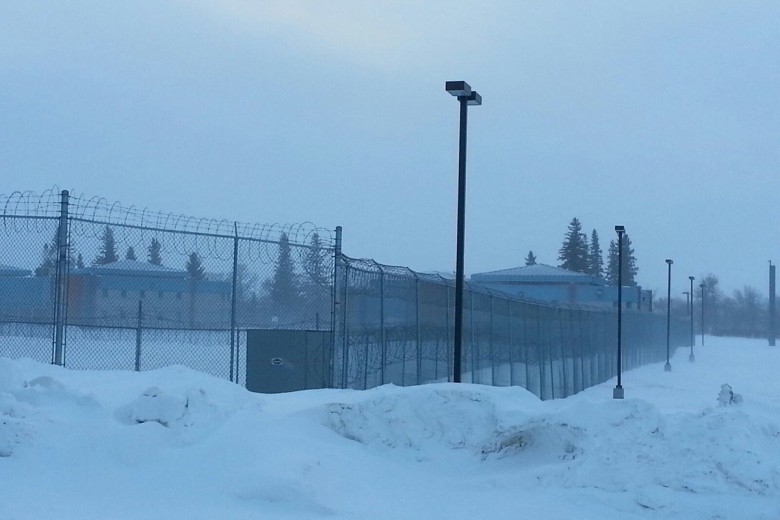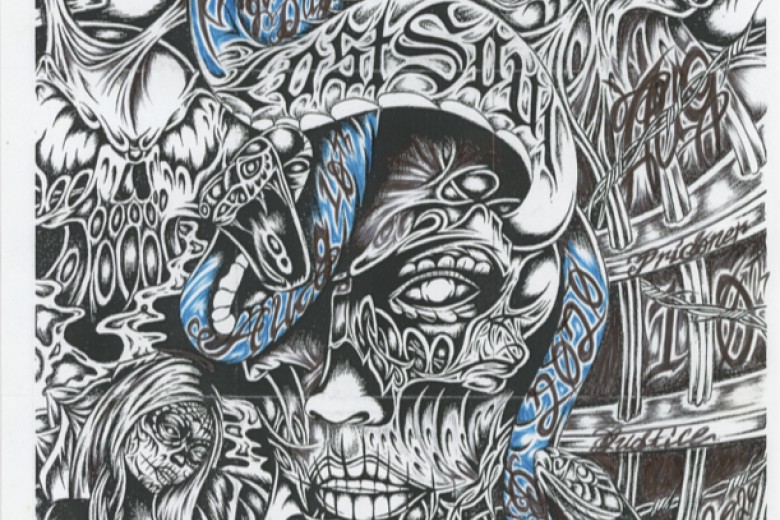Consider the strip search.
As of late 2017, a federal prisoner in Canada is to be housed and otherwise treated in accordance with their declared gender identity, which means guards of that same gender will carry out such a search. The prisoner may not, however, refuse the search. If they refuse, Correctional Service Canada (CSC) outlines a six-step procedure for how “the strip search of a non-compliant inmate” is to be forced. In step (a), the commanding officer is to issue and repeat a command: “A strip search must be conducted. If you do not cooperate, physical handling, or chemical or inflammatory agents may be used. Will you cooperate and remove your clothes yourself? Do you understand?” Indoors, an inflammatory rather than a chemical agent is likely to be used. The current inflammatory agent of choice is oleoresin capsicum: pepper spray. Step (f) clarifies that the search must be videotaped and that “it may be necessary to videotape a naked or partially naked” inmate who remains “non-compliant.” But all this state-sanctioned violence will be conducted with the sensitivity detailed in step (e): “staff will ensure that inmates diagnosed with gender dysphoria are accommodated with due regard for the vulnerabilities with respect to their needs, including safety and privacy.”
“A strip search must be conducted. If you do not cooperate, physical handling, or chemical or inflammatory agents may be used. Will you cooperate and remove your clothes yourself? Do you understand?”
The prison abolition movement argues that the modern prison is itself violence. It insists that no human person should be kept in a cage; that no amount of reform can make prisons acceptable; and that a respectful, enlightened prison is a contradiction in terms. It aims to end the use of incarceration as the main social strategy for managing criminalized behaviours, since it has been proven that prisons do not actually make communities safer. At the same time, it recognizes the urgent need to ease the suffering of people now behind bars, especially those who are hyper-vulnerable to brutalization, like queer and trans prisoners. From an abolitionist perspective, then, we should celebrate Canada’s recent reform of its policy on transgender prisoners – but also insist that these reforms do not legitimize or make humane a system whose basic business remains torture, sexual abuse, and social murder.
Implemented December 2017, the reform in question reverses CSC’s original policy of assigning transgender prisoners to male or female institutions based on their anatomical sex. It follows from federal Bill C-16, which added “gender identity and expression” to the types of discrimination forbidden by the Canadian Human Rights Act. That bill was the result of a 12-year battle by trans activists across the country: while former NDP member of Parliament Bill Siksay brought versions of the legislation to Parliament annually from 2005, grassroots mobilizations made sure that trans interests were not marginalized by middle-class LGBTQ advocacy that centred on marriage equality.
As a result, federal prisoners now have the right to self-identify their gender. (Prisoners serving sentences shorter than two years fall under the jurisdiction of the provinces; some, including Ontario, British Columbia, Nova Scotia, and Saskatchewan, have made an equivalent policy change.) Whatever their anatomy, those prisoners are to be confined in institutions that correspond to their gender, except where there are judged to be “overriding health and safety concerns.” They are to have access to either or both men’s and women’s catalogues of personal items for order. They are to be strip-searched as described.
The prison abolition movement insists that no human person should be kept in a cage; that no amount of reform can make prisons acceptable.
In itself, the right of gender self-identification for transgender prisoners is a major win. It takes seriously the stated experiences of trans people; it moves a certain amount of power to shape trans lives out of the hands of the medical establishment. If scrupulously enforced – a big if – it could do a great deal to protect incarcerated trans women in particular, who are at extraordinarily high risk of experiencing gender-based violence in men’s prisons. The statistics bureau for the U.S. Department of Justice found that between 2011 and 2012, 33.2 per cent of trans people who were incarcerated in federal and state prisons had been sexually assaulted by another incarcerated person, to say nothing of assaults by guards and staff. A California study found that of transgender women held in men’s prisons, 59 per cent had been sexually assaulted by another incarcerated person. Similar data on Canadian prisons is scarce but points in the same direction.
The new CSC policy “puts a bit of power back into the hands of people who are incarcerated,” says Rene Callahan-St. John, a trans man and advocate for trans rights who works with the Montreal-based Prisoner Correspondence Project. “When CSC was forced to make these policy changes, they were also forced to give incarcerated people some agency in making decisions about their own [lives] and well-being.”
To restore agency to the incarcerated is both an urgent task for activism and a paradox emblematic of neoliberalism. A typical move of neoliberalism, the political ideology informing both the Harper and Trudeau governments, is to bestow narrow (but highly publicized) forms of agency on individuals it has locked into coercive (but largely hidden) structures. This is how a progressive transgender prisoner policy can co-exist with Liberal-rubber-stamped federal funding for prison expansion, a total failure to roll back Harper-era mandatory minimum sentencing guidelines as promised, no visible investment in restorative justice alternatives to imprisonment, and provisions in the Criminal Code that have a disproportionate, discriminatory impact on queer and trans communities, like those around HIV non-disclosure.
To restore agency to the incarcerated is both an urgent task for activism and a paradox emblematic of neoliberalism.
“What surprises me about Canada, despite its relatively low – in comparison [to the U.S.] – incarceration rate, is the ferocity with which it has criminalized HIV,” says Chicago-based writer and activist Yasmin Nair, co-founder of the radical queer editorial collective Against Equality, which agitates against the state co-opting LGBTQ issues to underwrite its carceral and military violence. In Canada the average prison sentence for a person convicted for charges related to HIV non-disclosure is 54 months, and lifetime designation as a sex offender.
“Yes, we have to have gender-responsive strategies in place,” Nair continues, “but I’m always really concerned and wary about what I call the ‘switch and bait’ strategy of neoliberalism, which is: ‘We’ll give you this [reform], oh, by the way, whoops, built a few more prisons over there.’ […] So while the policies around HIV-positive people are rapidly escalating, we’re getting gender-responsive prisons.”
Callahan-St. John, too, points to the need for a broad systemic analysis that can account for why people on the trans spectrum are so likely to end up in prisons in the first place. Transphobia within families, job discrimination, and inadequate access to trans health care all increase the risk of criminalization, he says. “Trans people end up depending on survival crimes like selling drugs, street-based sex work, or petty theft to get by.”
Government policy that aims to support trans safety must end the brutalization of trans people already trapped in prisons, but it must also invest in trans lives before they become criminalized. “Trans people need access to health care, housing, jobs, and social assistance,” says Callahan-St. John. “The government must prioritize funding community organizations that build strong trans communities so that we are no longer pushed to the margins of society where we are entrapped by the legal justice system.”
In Canada the average prison sentence for a person convicted for charges related to HIV non-disclosure is 54 months, and lifetime designation as a sex offender.
The new CSC policy also relies on the man/woman gender binary that has, at best, ambiguous implications for non-binary or gender non-conforming prisoners. Here much depends on enforcement of the policy, which is left to the discretion of prison administrators. A genderfluid, bigender, or non-binary transfeminine-spectrum person may prefer not to be housed in a men’s prison, where violence may be most intense and where they will almost certainly be a target. A trans man, who may also be at risk of violence in a men’s facility if his trans identity becomes known, might have the same desire. So might cis men who, because of their small size or other traits coded feminine, are non-consensually gendered female by guards or peers and thus subjected to gender-based violence. That latter wish is almost certain to be refused by the prison administration, since the feminized man in question articulates gender in a way that fails to make him a recognized subject of trans rights. And the others? How does the recognition offered by CSC’s new transgender policy contribute to the broader project of ending violence against prisoners who are feminized, whether by choice or by force?
“If what rights and recognition mean is being locked up in a murder box with the right name on the outside, then rights and recognition mean nothing,” says Harry Josephine Giles, a writer and performer from Scotland who works on prison abolition. To be sure, Giles says, “our primary concern should be the material welfare of trans people – and most especially of trans women of colour – in prison […] but the questions for activists should be focused on treatment of us rather than [on] symbolic recognition of us by the state.” Campaigns for better gender recognition in prisons are crucial, Giles argues, as a survival need, but they must be coordinated with campaigns to end incarceration as the main strategy for redressing criminalized harm. “Or our siblings will continue to suffer the social murder of the penal system.”
“If what rights and recognition mean is being locked up in a murder box with the right name on the outside, then rights and recognition mean nothing.”
Along those lines, Canadians committed to a future without prisons should monitor the treatment of trans prisoners as the CSC’s new policy rolls out. This means listening to incarcerated trans people – particularly Indigenous and Black trans women. Does what the government says match what the government does, in the experience of the incarcerated? What do our imprisoned comrades recount in their letters? What monitoring and reporting standards for the treatment of trans inmates does the federal government put in place? How accommodating are prison officials of cases that challenge binary ideas of gender? Under what circumstances, and how often, do those officials exercise their licence to deny trans prisoners’ wishes on “overriding health and safety” grounds? How do these issues play out differently on the federal and provincial levels, and how can we ensure that every province and territory houses trans inmates in gender-appropriate facilities?
Gender self-determination is a fundamental human freedom, and we should celebrate any and all steps toward it. We should remember, too, that our own freedoms under neoliberal capitalism are typically granted to us only if we agree to avert our eyes from the brutality the state inflicts in “our” name against “them” – where “we” are presumed to be middle class, white, cis, straight, and able-bodied, and “they” are poor, racialized, LGBTQ, and/or disabled. This we must resist. Faced with a system that pacifies resistance through co-optation, that offers important reforms in part to defuse hopes for broader transformation, we must practice saying yes and no at the same time.


_1200_675_90_s_c1_c_c.jpg)




